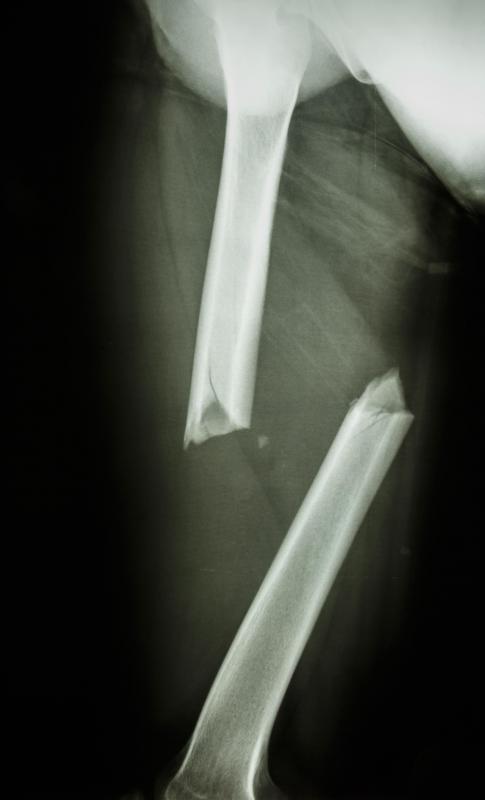At TheHealthBoard, we're committed to delivering accurate, trustworthy information. Our expert-authored content is rigorously fact-checked and sourced from credible authorities. Discover how we uphold the highest standards in providing you with reliable knowledge.
What is Closed Reduction?
Closed reduction is a method used for treating fractures in which the physician manipulates the fractured bones from the outside of the body to correctly position them without making an incision to access the site of the fracture. This method of fracture treatment is preferred in many settings and it will be tried first in some cases even if a doctor fears that surgical treatment may be required. Closed reductions can be used to treat not just fractures, but also dislocations.
During this procedure, the physician takes X-rays to visualize the bone and to determine the nature and position of the fracture. Analgesic medications are given to the patient to make him or her more comfortable, and then the doctor, usually an orthopedic surgeon, carefully manipulates the bones to fit them back together. Once the surgeon is satisfied that the bones are aligned properly, they are immobilized so that they can begin the process of knitting back together.

Once a closed reduction is complete, a second x-ray is taken to confirm that the bones are properly placed. This is important because if they are not positioned appropriately they will heal improperly. The bones may still heal improperly or shift during healing, which usually leads to a situation in which a patient must have surgery. Poorly healed fractures can cause complications such as limb shortening and joint weakness. Patients usually experience a significant reduction in pain once a fracture has been reduced.

There are a number of advantages to a closed reduction. This type of treatment is less invasive, which can speed healing time. It is less likely to expose the patient to the risk of infection, because the skin is not broken, and it will not leave scars behind, which can be a concern for some patients. However, this procedure is not always appropriate. Sometimes a fracture needs to be repaired surgically because it is complex.

Usually a surgeon can determine from x-rays whether or not surgery is necessary. If the surgeon is not sure, a closed reduction may be attempted first to see if the situation can be resolved that way. Before doing this, the surgeon has to weigh the risks and benefits of doing a closed reduction. One risk may be the risk of increased injuries to the patient incurred during a closed fracture reduction. If this risk is high, the surgeon may suggest proceeding directly to surgery.
AS FEATURED ON:
AS FEATURED ON:















Discussion Comments
Five years ago, I did a clumsy thing. I tripped going down some stairs and broke my wrist and the elbow on the same arm. This was after breaking my other wrist the year before.
The fracture in my wrist was set without any problem, but my elbow was a mess. The doctor tried to get it back in place. No luck. I then had to have surgery. My elbow was kind of crushed and just didn't go back together well. It healed slowly and is weak and it hurts to this day. I guess when you get older, you don't heal as well.
When I woke up after surgery, did I ever have a surprise! My new granddaughter had been born in the same hospital. I convinced the nurses to let me go to the fifth floor to see her. What a crazy day.
A good friend of mine is a nurse in an emergency room. Boy, has she seen some awful cases of broken bones. She once saw a young boy come in with a badly broken leg. It was sticking out with just a thin layer of skin covering the jagged bone. He was in such pain and cried and cried. She felt so sorry for him.
Anyway, the doctor tried a closed reduction but he couldn't get the bone back in place. He tried using x-rays, but still couldn't get it in place. Finally, he had to perform surgery because there was jagged edges where the bone broke.
The little boy healed fine. I guess because he was young and young bodies heal fast.
Post your comments